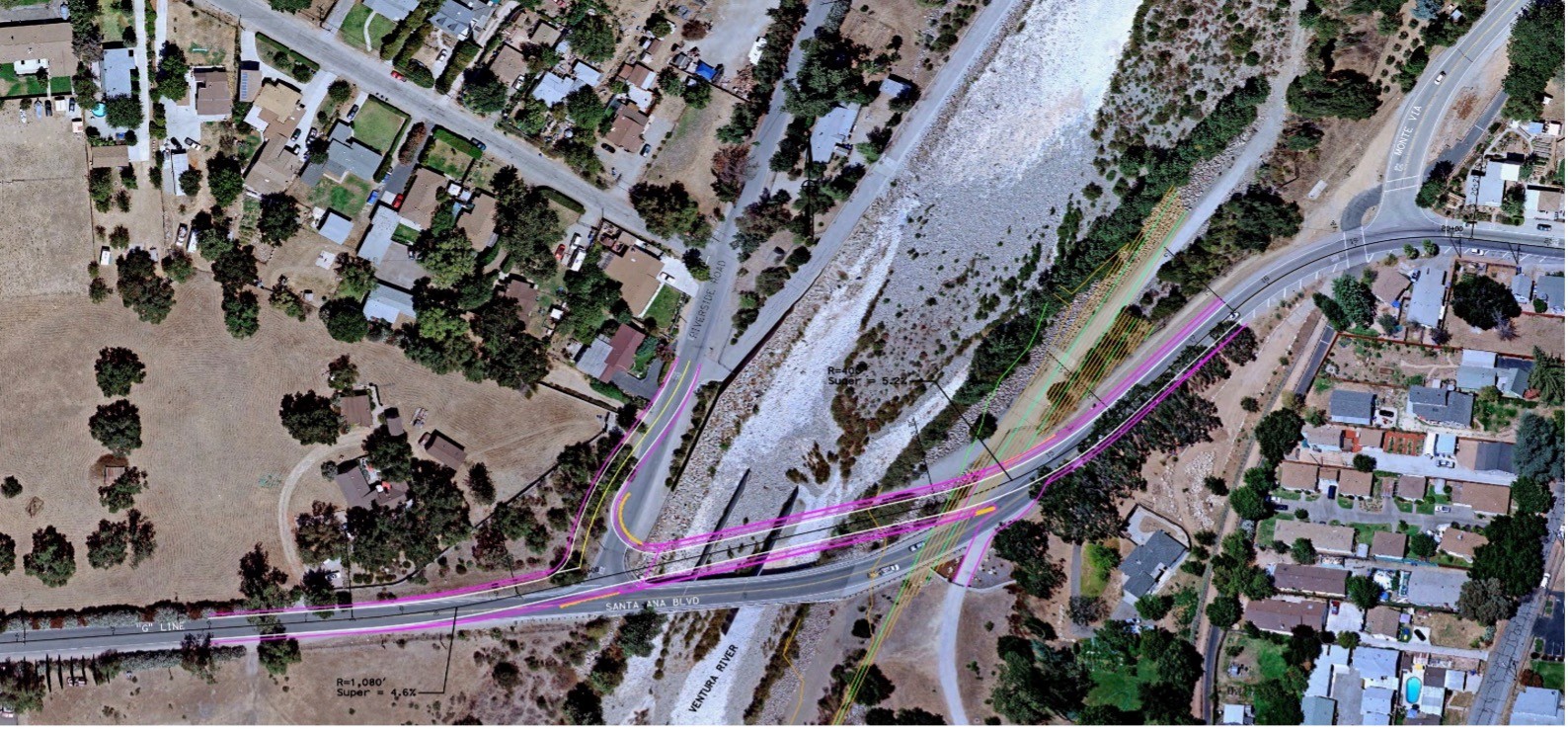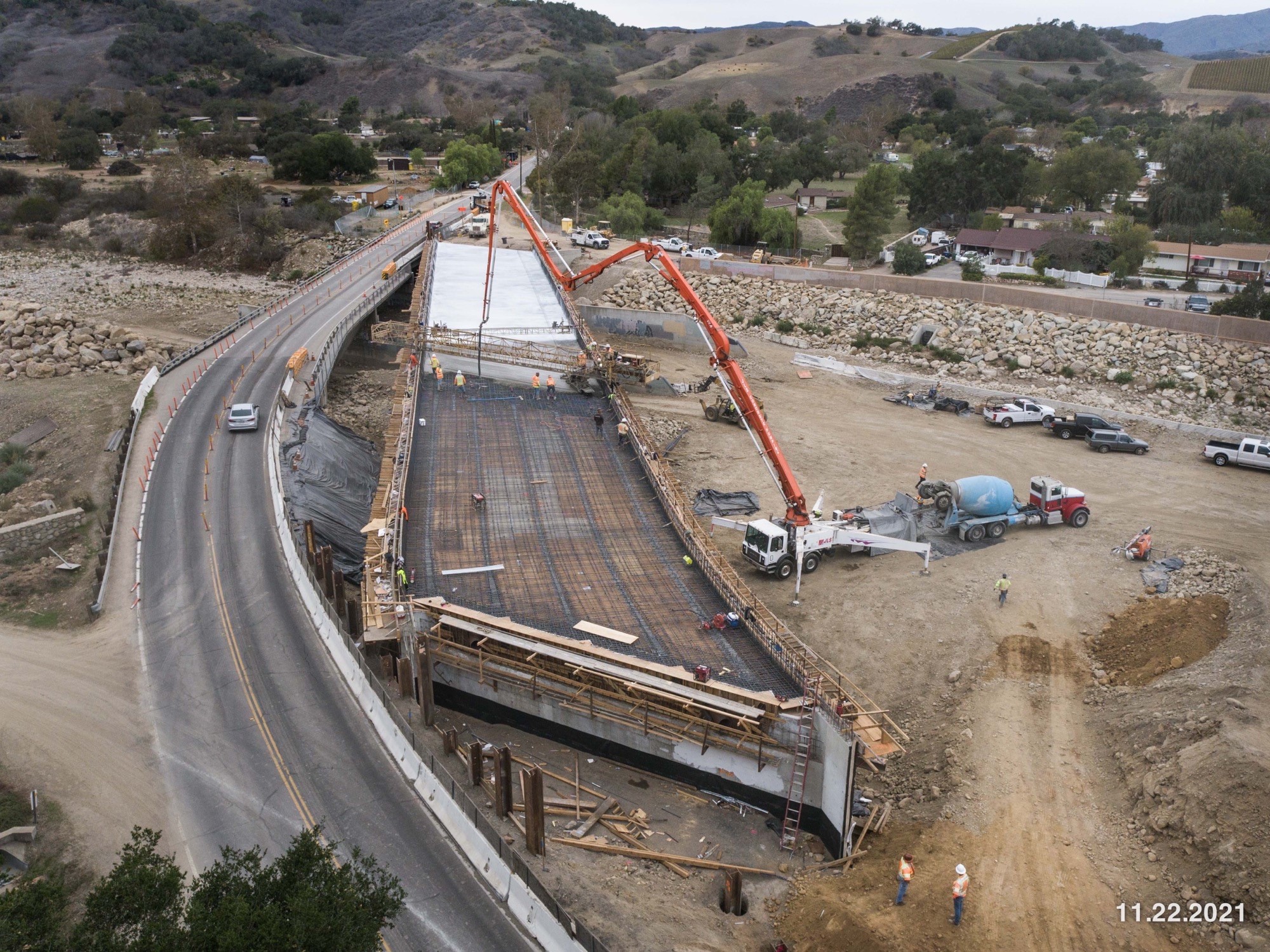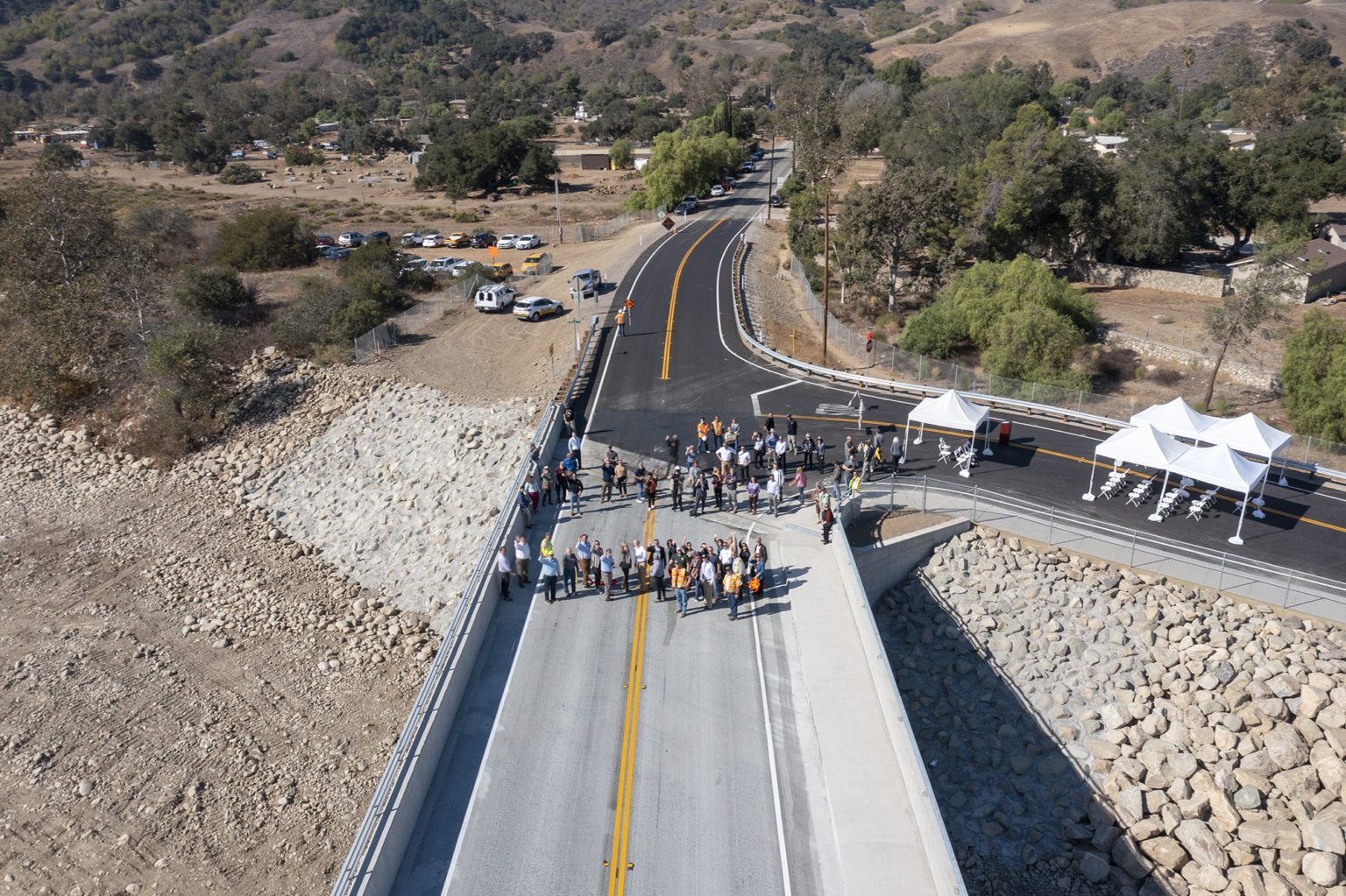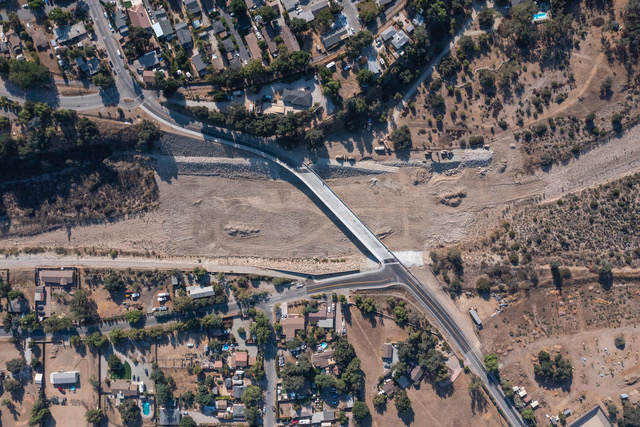Overview
In 2019, the California Department of Fish and Wildlife provided VCPWA- Watershed Protection with a $13.4 million grant to fully fund the Santa Ana Boulevard Bridge Replacement Project, the first essential implementation component of the Matilija Dam Ecosystem Restoration Project (and its first on-the-ground investment since 2009).
The new, longer and taller bridge would replace an older bridge near Oak View that created a bottleneck in the Ventura River, narrowing the channel and constricting the floodplain so that gravel and cobble would accumulate immediately upstream during large storm events.




